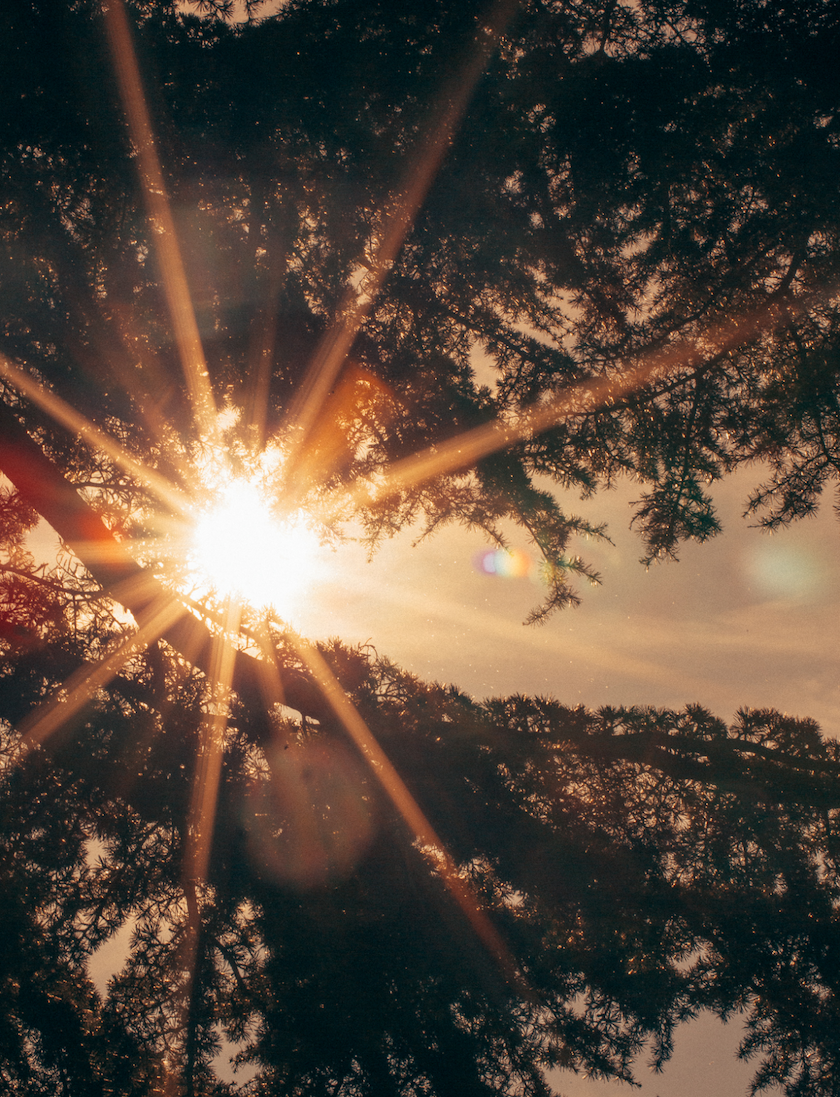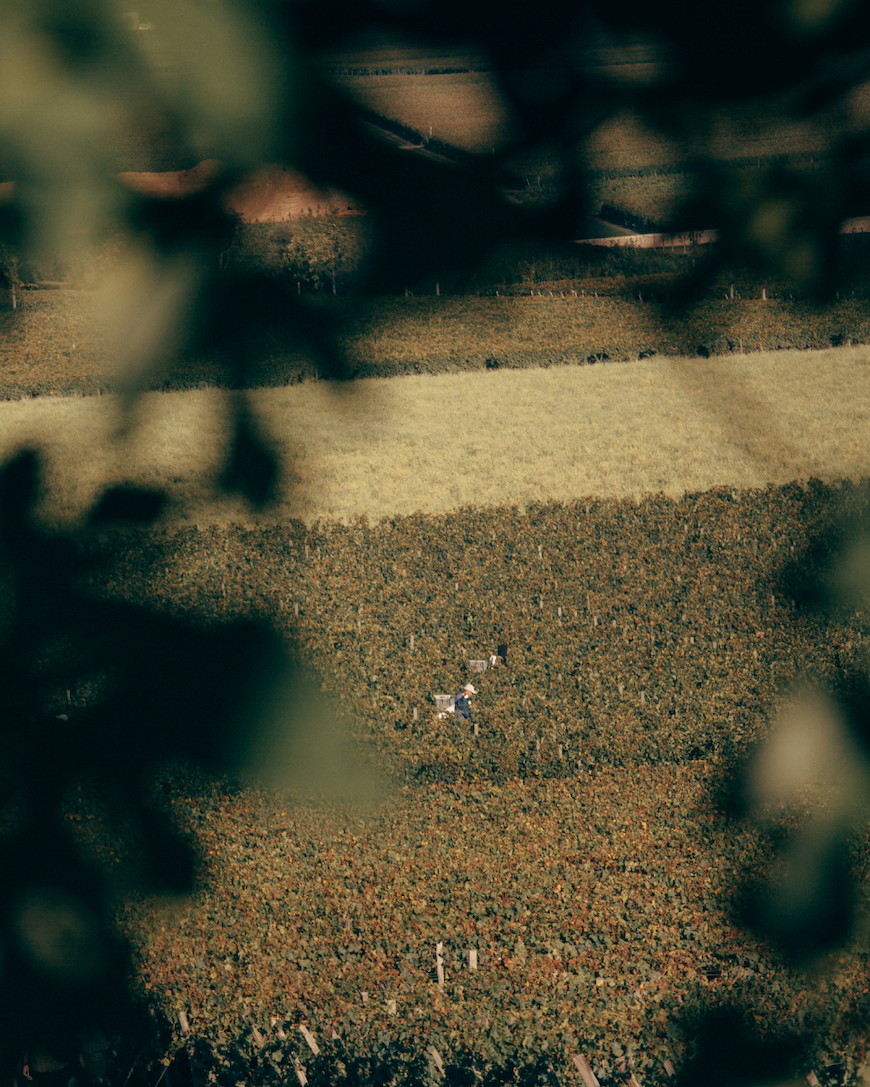

Vintage diary
winter

The dormant season.
When the signal sounds, come out of hibernation.
The climate is mild, the awakening as well; initial work is calm.
At the end of January, driven by milder weather, the fruit trees push out their very first flowers.


Then in early February, new guests in the garden: strawberry trees, rowans and berry trees are planted — sources of shelter and food for wildlife as it wakes up from its slumber too.
spring


The vibrant season.
The return of water and birdsong.
It rains along the hillsides, boots in the clay.

The vine unfurls, despite the threats of frost and mildew.
Freezing nights in April: the wind turbine saves the rows but the fruit trees succumb.


Finally, the temperatures rise again and support growth until the flowers of May:


beautiful blossom, promising for the bunches — swallowtails, yellow and black butterflies, in their dozens.
summer


The abundant season.
Generous sun on umbrella pine.
Shades of green burst across the entire estate.
In mid-June, the pistils bear fruit, swelling up like peas.
Then cool July drives growth, for one week’s veraison.
August brings drought (water drying up in the wash house, the clay cracks): we search for shade
Like a boar’s snout among the mulch around the roses — meanwhile, the light concentrates the fruit.

autumn

The ripe season
Four full days to harvest.
Merlot, then Cabernet Franc, the same generosity.
The harvest is more plot-based than ever thanks to the year’s work.

More vats, more batches and more precision in working the grapes!


The sulphur-free vinification also draws on these new developments: the same vats, squat and technically refined, offer greater fermentation control — the taste of accuracy.
winter
The dormant season, again.
The vines doze off, but not the wine.
In barrels and amphora, the juices intensify.
People and time work in the cellars and go back up to the garden.




the wine
After trimming the topiary, we split logs for the fire.
Finally, it’s time to blend, combining the structure of Cabernet Franc (41%) with the curves of Merlot (59%). And while the camellias flower up above, the cellars give birth to a wine with round, gourmand and expressive balance: within, the smooth, sapid volume of blackcurrant; the clear, prominent energy of bramble — sap and fruit in one, the latest product of a vineyard orchard.